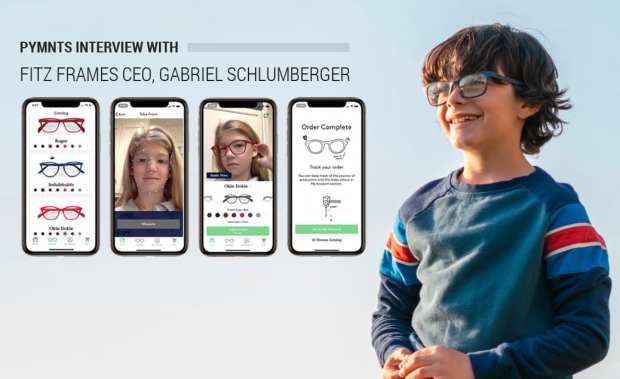Kids’ Eyeglasses Get A Mobile And 3D Makeover

It’s a story commonly heard from children – and a story that, in this case, led to a fresh idea for subscription commerce.
As told to PYMNTS in a recent interview, the story involves the son of Gabriel Schlumberger, CEO of U.S.-based Fitz Frames, which makes and sells 3D-printed eyeglasses for children. Schlumberger’s own son wears glasses, and his son once told his teacher he could not play on the monkey bars during recess.
“Kids are aware of how expensive glasses are,” Schlumberger said. That’s unfortunate, he added, because that awareness – that fear of breaking them – can, in his words, sometimes prevent kids from being kids.
Entrepreneurs often start companies stemming from their personal experiences. The needs of children are a driving force for online and mobile innovation and disruption. So, too, are the often high prices of eyeglasses, including frames. Indeed, as PYMNTS has previously covered, those two traits have combined to produce more digital options for children’s eyeglasses. In the case of Fitz Frames, subscription commerce – among the hottest ongoing trends in eCommerce, one that is in a state of seemingly constant evolution – is also part of the mix.
Subscription Push
It’s not exactly unusual these days, of course, to find multiple eyeglass options online for both adults and children – the purchase of glasses was traditionally an expensive and friction-filled process before the spread of online sales. The general idea behind Fitz Frames is to entice parents into buying yearly $185 subscriptions that enable the purchase of as many glasses as needed to replace broken or lost pairs. (The company also offers one-time purchases for $95).
“The goal is to make glasses a lot less precious,” Schlumberger told PYMNTS.
Face measurements and purchases happen via a mobile app that consumers download. “We wanted the entire purchase process to be under five minutes from the time of downloading the app to placing the order,” he said. “The thing we are seeing, while the app is very fast, people are coming back and trying on all sorts of frames. It’s almost like a digital game.”
When it comes to selections, the company’s eyeglasses have lighthearted names, ranging from “Yesiree” to “Ten-Four,” with the goal of injecting some fun into the process.
Shoppers can check out using a credit card, debit card, Apple Pay or health savings account (HSA)/flexible spending account (FSA) at launch. Schlumberger said Fitz hopes to start accepting other insurance options by the end of the year.
The glasses are built at the company’s Youngstown, Ohio facility with state-of-the-art materials via 3D laser sintering. The company then delivers the frames to consumers’ homes.
Pop-Up Stores
It’s not just the subscription commerce trend the company is tapping into. Fitz is also striving to combine its online and mobile strengths into in-person experiences via pop-up retail. Already it has operated a pop-up experience in the Los Angeles areas, Schlumberger told PYMNTS, with more such efforts planned for other locations. He added that the service could soon find its way into eye doctors’ offices via such mobile devices as iPads.
Eyewear is big business in this online and mobile era, not just for children’s glasses – and competition keeps getting fiercer on all fronts.
For instance, Warby Parker rival Eyebobs previously opened two brick-and-mortar locations: one in the Mall of America and one in Orlando’s Florida Mall. The firm first began testing the concept last October at its Minneapolis-based Glenwood Avenue headquarters. Eyebobs’ move reflects something of a trend among current online sellers, despite the mall-based retail apocalypse narrative that is prominent today.
While online shopping has taken something of a bite out of the real world, and mobile has very much changed consumer habits, shoppers are still doing the vast majority of their shopping in physical stores.
According to one recent estimate, “The eyewear market is projected to have 11 percent of its total revenue generated through online sales by 2021 worldwide. With a market volume of $31 billion in 2018, the most revenue is generated in the United States, followed by Europe.”
As this recent interview with Schlumberger demonstrates, children’s eyeglasses are expected to be a big part of this growth trend.
